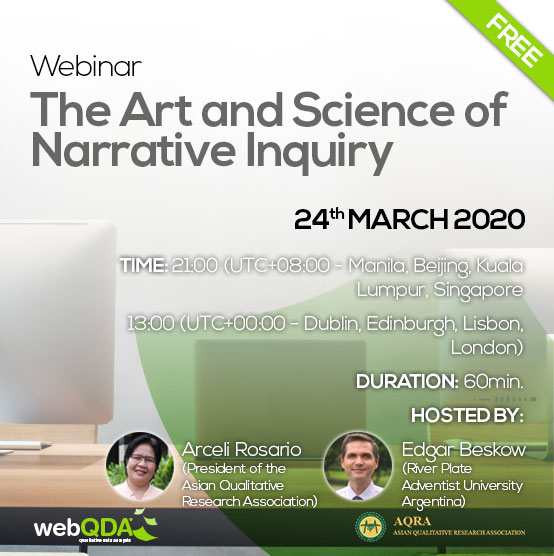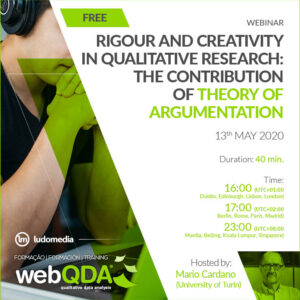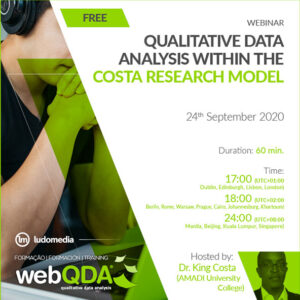Description
The Art and Science of Narrative Inquiry
Hosted by: Arceli Rosario and Edgar Beskow
Narrative inquiry is one of the designs of qualitative research. It became popular in the 20th century and has been used specifically in the fields of sociology, education, and management. Pinnegar and Daynes (2007) define it as a “study of stories or narratives or descriptions of a series of events” (p. 4). It helps researchers and participants understand experience, as these two parties collaborate and interact through a sustained period of time (Clandinin & Connelly, 2000). There are several narrative inquiry approaches that researchers can choose from. Among them are the critical or libertarian approach (Kim 2016), the literary-based approach (Polkinghorne, 1988), the psychological approach (Lieblich, Tuval-Mashiach, & Zilber, 1998), and the pragmatic-relational approach (Clandinin, 2007; Dewey, 1981). In this presentation, we will focus on the pragmatic-relational approach. Narrative inquiry studies share common features such as (a) first-person accounts of participants (Kim, 2016), (b) chronological framing of the participants’ accounts (Creswell, 2013); (c) restorying (Merriam & Tisdell, 2016), (d) narrative and poetic portraits (Muccio, Reybold, & Kidd, 2015). Data sources are stories through interviews or memoirs, field notes through shadowing, aesthetic portrayals (Lawrence-Lightfoot & Davis, 1997), documents, photos, artifacts, and contextual information. For data analysis, we will expound the frameworks of Muccio, Reybold, and Kidd (2015), which includes data metamorphosis and data representation and of Braun and Clarke (2013) for thematic analysis. We will show examples of narrative and poetic portraits and aesthetic portrayals from the narrative studies that we have conducted and how data analysis is done through the use of webQDA.
This webinar is organized by webQDA and the Asian Qualitative Research Association (AQRA).




Reviews
There are no reviews yet.